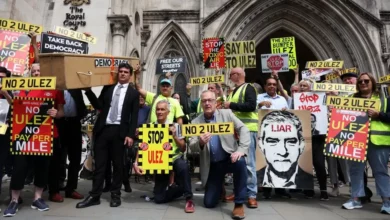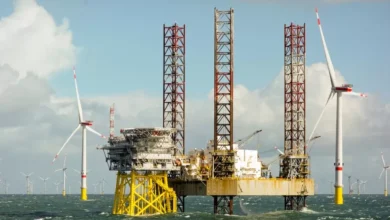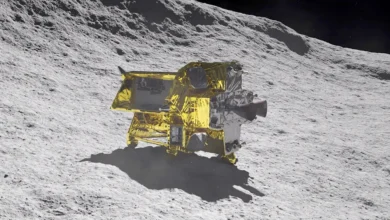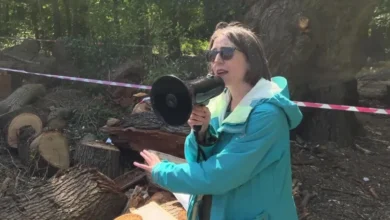Which European nations are winning the heat pump race?
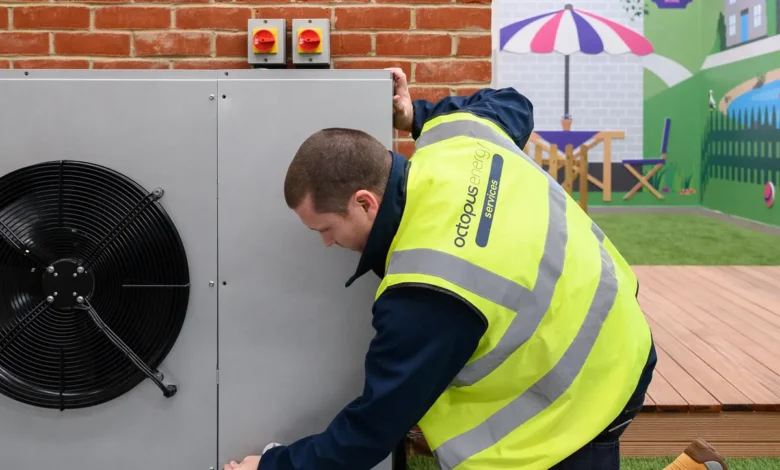
When Andreas Rosen decided to future-proof his home in Germany’s Mosel wine region, he knew he wanted to upgrade his heating system to a low-carbon heat pump.
“I didn’t want to deliver it to the next generation with an oil system,” says Mr Rosen. “We were wondering what we should do for the longer run and now [a heat pump] was doable with government help.”
About half of Germany’s 41 million homes currently rely on gas heating, with another quarter running on oil. In a bid to encourage homeowners to decarbonise their heating, Germany introduced a rebate scheme in January 2023 that offers up to 40% back on the cost of buying and installing a heat pump.
Heat pumps use energy taken from the air, water or ground to provide both heating and cooling. They have been proven to work even in extreme temperatures and can drastically reduce energy bills once installed.
The scheme is just one of a host of heat pump subsidies in place across Europe and part of a broader push to reduce carbon emissions. From 2024, every new heating system installed in Germany must run on 65% renewable energy.
Bastian Distler, a product manager in Ketsch in south-west Germany, was considering upgrading to a heat pump anyway for environmental reasons, but admits that he wouldn’t have been able to without the subsidy. Purchase and installation can cost anywhere from €10,000 to €30,000 (£8,700 to £26,000; $11,000 to $33,000) compared to around €7,000 for a new gas boiler.
“I have two little children which makes you question some behaviours and you feel better if you do something good for the environment. But to be very honest, if it had been very, very expensive and it didn’t pay off, I probably would not have done it,” says Mr Distler.
While the scheme is certainly making it easier for Germans to invest in heating system upgrades, heat pump sales were already on the increase.
“We had a market growth of 53% last year,” says Martin Sabel, managing director of the German Heat Pump Association. “The year before it was around 30% and the year before that around 40%. So we’ve had a good growth rate for several years now.”
The dramatic uptick in demand caught many manufacturers off guard, leaving some homeowners waiting up to 10 months before their new heat pumps could be supplied and installed by trained technicians, who are also in short supply.

Manufacturers like Viessmann are scaling up production to solve the shortfall, as well as pouring huge investment into training installers, providing educational materials for would-be buyers, and helping customers navigate often complex subsidy applications.
Günther Schlachter, vice president of residential electric solutions at Viessmann, believes that supporting and training installers is key to decarbonising home heating.
“Our installer… can consult with their customers [and advise against] the cheapest gas or oil option to make use of the subsidies that are now in place for a future-proof solution,” says Mr Schlachter.
Jürgen Fischer, president of climate solutions at Danfoss agrees. “Typically, installers focus on gas. For a heat pump, they need to also understand electrics and refrigeration. So educating the end user is important, but it’s more important to educate the person selling the system because 80% of the decision-making process happens with the installer.”
Most European countries currently face the same issues with supply, installer training and cost, but geography and culture also heavily influence what we expect and demand from our heating systems.
Better insulated houses are mores suitable for heat pump systems, which generate water at lower temperatures for the central heating system. Trying to heat a poorly insulated home with a heat pump would be difficult and unlikely to save you much money.
